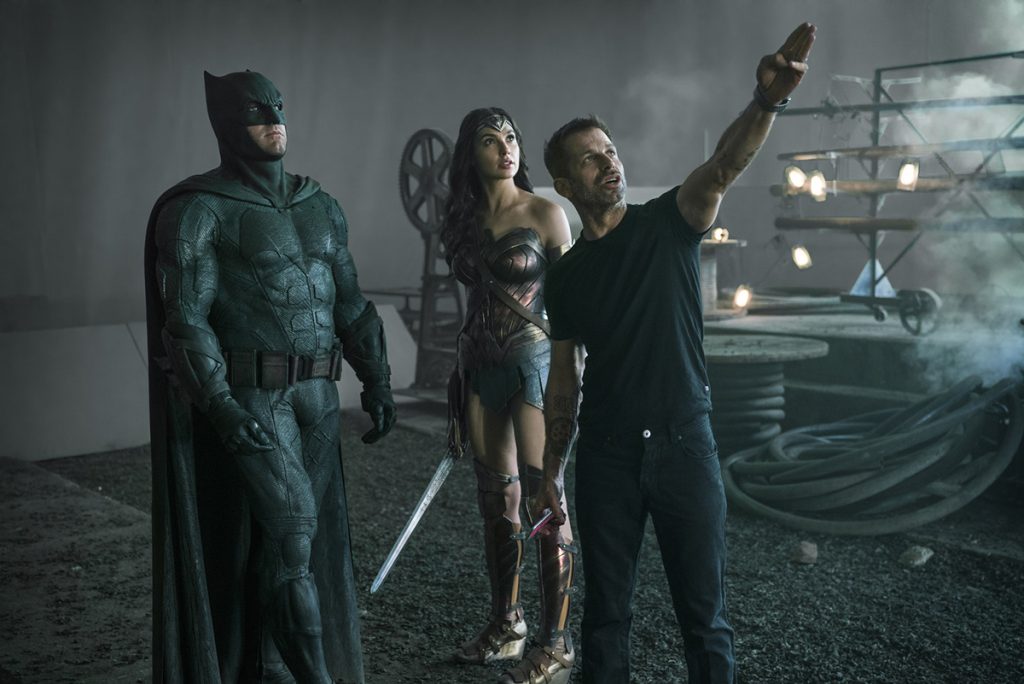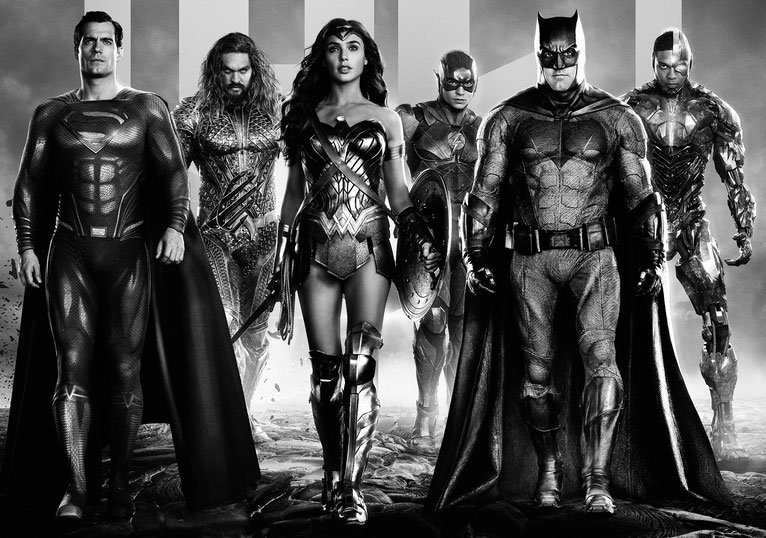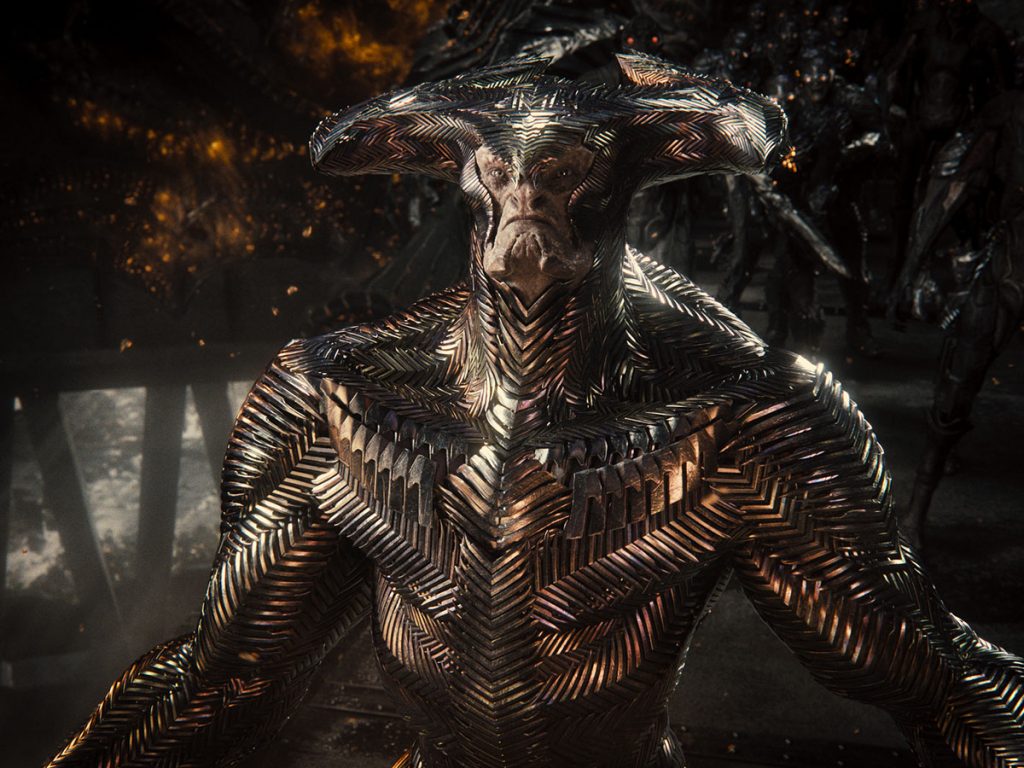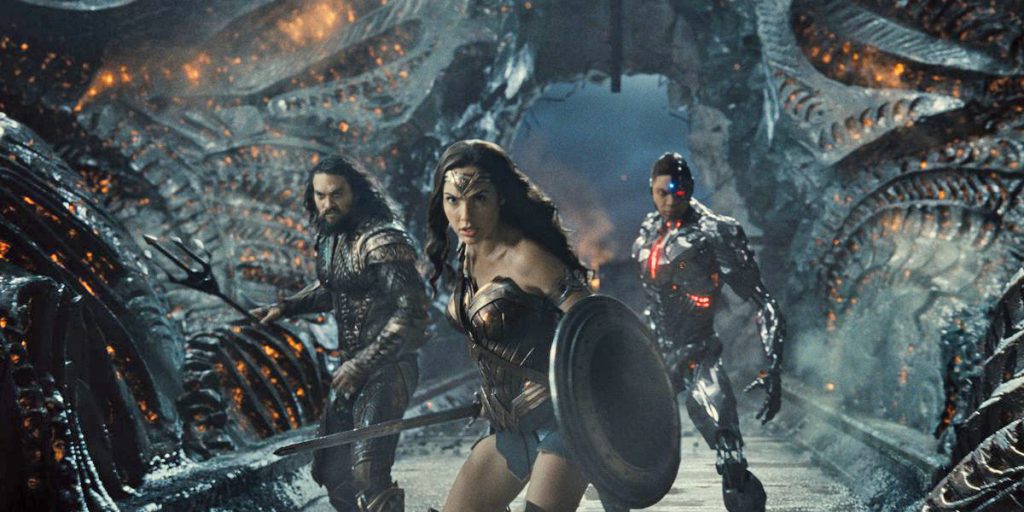Zack Snyder’s Justice League is a miracle of superhero moviemaking, and we spotlight the 7 reasons Snyder succeeds where Joss Whedon failed four years ago.
After nearly four years of fan campaigning and fervent anticipation, the fabled “Snyder Cut” finally debuted on HBO Max on Thursday, March 18th, 2021, immediately earning exaltation from DCEU devotees but somewhat unexpectedly eliciting respect from formerly cautious critics as well. Still, looking back, such positive reception should have come as no surprise, especially when comparing the “Snyder Cut” to its much-maligned 2017 counterpart. Clocking in at a hefty 242 minutes, Zack Snyder’s Justice League is more than just a mere “Director’s Cut” of Joss Whedon’s (The Avengers, Buffy the Vampire Slayer) infamously troubled theatrical edition. While the two films share a common foundation and a similar story structure, Whedon’s erratically edited and appallingly anticlimactic 119-minute version lacks the grand gravitas and monumental mythmaking one has come to associate with Snyder’s awe-inspiring artistry as an auteur, and thankfully, with four hours to fully flesh out his vision for this epically expansive cinematic universe, we are only now able to see what Snyder intended for the staggering saga he had set up from the start.
Though earlier this week Bernard shared his thoughts on why he views the “Snyder Cut” as a disappointment, I believe that the improvements Zack Snyder’s Justice League makes to 2017’s “Josstice League” are innumerable, and below, in honor of the film’s seven “parts” (including the epilogue), we have specifically honed in on 7 reasons Snyder succeeds where Whedon failed.
Spoilers will follow from here on out.
1. A STRONGER SENSE OF SCOPE AND SCALE

One of the major criticisms with Joss Whedon’s heavily retooled take on Justice League – which, to be fair, was additionally saddled with a surplus of debilitating studio demands – was how “small” the story felt. At under two hours, the film had to introduce Aquaman (Jason Momoa, of Game of Thrones), The Flash (Ezra Miller, of Fantastic Beasts and Where to Find Them), and Cyborg (Ray Fisher, of True Detective); explain the mythology of the Mother Boxes; fit in an all-new antagonist (Steppenwolf, played by Harry Potter and the Deathly Hallows’ Ciarán Hinds); resurrect Superman (Henry Cavill, of Mission: Impossible – Fallout); and set up sequels for the future. Naturally, Whedon was unable to handle all these tasks in the allotted time, and, as a result, the final product felt both chaotically crowded and woefully underdeveloped.
The best part about Zack Snyder’s Justice League is that, at four hours, the film can finally breathe. Given that Justice League is meant to be the conclusion to Snyder’s Superman trilogy-of-sorts (following Man of Steel and Batman v. Superman: Dawn of Justice), it should feel like an epic on par with Marvel’s Avengers: Endgame. Joss Whedon’s small-scale “Diet Avengers” simply didn’t cut it. Snyder’s storytelling is not only broader in environmental breadth – transporting us from the thrilling Themyscira to the alluring Atlantis to the alarming Apokolips and more, while Whedon stayed more “self-contained” – but also richer in resonance, infusing every scene with impactful emotional stakes and letting major moments (the flashbacks to the former war with Darkseid, the Amazonians’ sacrifice, Superman’s aforementioned resurrection) linger until we properly perceive their weight.
2017’s Justice League is as surface level entertaining as most superhero fare is nowadays, but there’s no depth to its narrative beyond that. With Snyder back at the helm, Zack Snyder’s Justice League gives this team an adventure worthy of their talents – and one that doesn’t skimp on the substance either.
2. COMPELLING AND CONVINCING TEAM CAMRADERIE

Another advantage of the increased runtime of Zack Snyder’s Justice League is that we get to see more of the team actually transforming into the iconic legends of comic-book lore we’ve come to know and love. 2012’s The Avengers was preceded by solo origin stories for Iron Man, Captain America, Thor, and Hulk, but Justice League didn’t have that luxury. Although Batman was a co-lead in the franchise’s former film – with Wonder Woman making her first appearance in Batman v. Superman: Dawn of Justice as well, followed by her stupendously successful spin-off – Aquaman, The Flash, and Cyborg were all new faces at the release of 2017’s Justice League. And yet, when first introducing these three, Whedon merely provided them with paper-thin personalities (Aquaman was a caustic cynic, The Flash was the wacky comic relief, and Cyborg was a forlorn tragic figure) and called it a day.
In contrast, Snyder not only probes each of these character’s personal strifes with intricate insight – analyzing Aquaman’s painful ties to his past, detailing The Flash’s devotion to his imprisoned father, and comprehensively covering the circumstances that led to Cyborg’s current condition – but he also puts in the work to properly devote significant screentime to the development of the League’s camaraderie. In Whedon’s version, the team members simply felt like cold colleagues. Here, they may not be “fast friends,” but over the course of the film, they build a riveting respect for one another, and their relationships are then more meaningful – we feel like this “found family of freaks” has truly laid the groundwork for prosperous partnerships that will prove essential in the long run.
3. AN INCREASED EMPHASIS ON CYBORG’S STORYLINE

No individual benefits from the four-hour runtime of Zack Snyder’s Justice League more than Cyborg. Under Whedon’s direction, the character is an afterthought, relegated to the sidelines often with very little to say. We’re told of the tragic circumstances that led to his cybernetic construction, but these details are passed over as quick as possible, and his complicated connection with his scientist father Dr. Silas Stone (Joe Morton, of Terminator 2: Judgment Day and Speed) is conveyed with even less consideration. Any chance for further emotional investment from the audience is impossible with how much Whedon shortchanges Cyborg’s supporting role.
Meanwhile, in Snyder’s words, Cyborg is “the heart of the movie,” and his cut proves that this statement was not simple posturing, as he makes good on his promise to effectively explore all of Cyborg’s enmity in its entirety. Silas’ failings as a father are repeatedly revisited throughout the film (including his prioritization of his profession over his family and his later decision to revive his son without his say), and therefore, we feel the might of Cyborg’s misery far more than we did before, when this anguish was somewhat ambiguous.
Likewise, when Silas makes his climactic sacrifice, we know what this moment means for both him and Cyborg because Snyder has actually taken the time to involve us in the intricacies of their troubled relationship. And, as Silas’ death spurs Cyborg to become the superhero he was (re)born to be, Snyder makes it clear that he – and the team – would not be successful were it not for his actions, solidifying this storyline’s significance to the Justice League saga as a whole.
4. NO SEXIST REPRESENTATION OF WONDER WOMAN THIS TIME AROUND

One of the chief complaints of “Josstice League” was the sexist manner in which it depicted Gal Gadot’s (Fast & Furious, Ralph Breaks the Internet) Wonder Woman, mere months after her revolutionary solo film subverted expectations for the portrayal of women in superhero cinema. With sleazy close-up shots of her skirt or feminine form, inappropriate comments from her team members (including Aquaman’s filthy flirtations and Batman’s implication that she is, at times, “too emotional”), and the piss-poor positioning of Wonder Woman as a stereotypical “maternal” figure for the team (“Children. I work with children.” Bleh.), Whedon proved that he could not do the character justice. And that’s without even mentioning the bit where The Flash “comically” falls on her breast. Hilarious.
Thankfully, Snyder restores Wonder Woman’s agency and brings the role back to its roots in his cut, solely showcasing her as a lively leader, a formidable fighter, and an exemplary equal to her male team members. She’s not there to “parent” the men, she’s not some “object of affection” for anyone, and Snyder’s camera lacks the “leering” qualities of Whedon’s, preventing her from being perceived as eye candy instead of as the wild-hearted warrior she is in her soul. It’s a characterization more in line with what Patty Jenkins accomplished in her 2017 foundational classic of feminist cinema, and it honors her hallowed history as hero for women around the world.
5. TRULY TERRIFYING VILLAINS WITH MOTIVATION AND MULTIDIMENSIONALITY

In 2017’s Justice League, Steppenwolf was no more than a chunk of cranky CGI, lumbering from scene to scene with no real purpose or presence of any kind. There was no talk of any grander ties he had to other terrifying titans in the galaxy, and he never offered any authentic answer for why he wanted the Mother Boxes so badly. He seemingly just wanted to end on life on Earth because he was in the mood for mayhem, and we were supposed to take that explanation at face value.
With Snyder at the helm once more, Steppenwolf not only receives a magnificently rendered visual makeover but a rousing renovation of his personality as well, coming across as more chilling and more complex than ever before. Here, Steppenwolf is a pathetic errand boy for the domineering Darkseid – a henchman who has one last chance to prove his piety for his master and get in his good graces, after betraying him in the past. And, therefore, it is this desire that leads him to cause as much death and destruction on Earth as possible to secure it for Darkseid’s domination.
Honestly, Snyder’s decision to include Darkseid in the narrative at all is a scintillating stroke of genius, as it both amplifies Steppenwolf’s character arc and heightens the stakes of the story as a whole. No longer is Steppenwolf merely acting of his own volition – it’s clear now that he’s a pitiful pawn in a much larger game, and the League certainly has their work cut out for them, in both this movie and the many that (could?) follow.
6. A FAR MORE EPIC FINALE

As has been stated many times before, 2017’s Justice League just felt too simple and straightforward at the end of the day, and with little interest in cultivating any compelling intensity throughout its entire runtime, it continually undercut any chance it had to evoke the “epic” aura that Snyder initially intended to harness himself. This attitude was never more present than in the movie’s climactic conclusion, which felt depressingly diluted and lamentably “low-stakes,” especially when taking into account an audience’s expectations for the big “boss battle” in the first-ever Justice League film. Even odder was the inclusion of some random Russian family that the League takes turns protecting throughout the final fight – an aside that constantly draws our attention away from the main event and adds next-to-nothing to the narrative.
Given Snyder’s propensity for pageantry and pompousness, we should’ve known his version of the film’s finale would be something special, but it’s hard to overstate just how much it exponentially exceeds even our wildest dreams. Though certain beats carry over from Whedon’s version, there are many new moments for each and every character to leave an appropriate impression and spotlight their specific strengths as superheroes (with the smarminess of Black Suit Superman as a standout). And yet, Snyder is not content to stop there, gifting us with what may be one of the most striking and skillfully staged setpieces in any superhero movie ever when the team fails to prevent Steppenwolf’s success and The Flash has to use his Speed Force to reverse time and give them a second chance. Simultaneously aesthetically stunning and emotionally stirring, it’s one of the best scenes Snyder has ever shot, period.
7. BRILLIANT CINEMATIC UNIVERSE BUILDING

In the wake of negative reception for Batman v. Superman: Dawn of Justice, it was easily apparent that Warner Bros. was hesitant to double down on the “SnyderVerse,” and therefore, when Snyder had to step off the project, they (and Whedon) used this opportunity to scale back the larger storytelling he had in mind and tell a more modest tale, with less focus on future films. While this approach was understandable at the time, it has also proved to be an egregious error. Not every franchise has to be a cinematic universe comprised of stories and spin-offs both big and small, but when you’re a property like DC Comics, and you have countless compelling characters at your disposal and an infinite number of ideas for epic blockbuster crossover events and the like – all while your core competitor, Marvel, is kicking your ass – it makes zero sense to throw away this shot at approximating the MCU’s success.
Fortunately, Snyder understands the importance of intricately building a cinematic universe to earn audience investment in a superhero series over time, and that perception is present throughout all of Zack Snyder’s Justice League, from the supporting characters subtly set up for subsequent sequels (Darkseid, Martian Manhunter, Iris West, etc.) to the electrifying epilogue he engineers, with tantalizing teases for both the Injustice League (led by Jesse Eisenberg’s Lex Luthor and featuring Joe Manganiello’s Deathstroke) and an enthralling extension to Batman’s (Ben Affleck, of Gone Girl and The Way Back) “Knightmare,” where he converses with Jared Leto’s (Dallas Buyers Club, The Little Things) jocular Joker and speaks of a society that has been upended by a sinister Superman.
One of the biggest reasons 2017’s Justice League didn’t land with audiences was because of how stripped-down and small-scale it felt, isolated from the rest of the DCEU. When done right, audiences do crave interconnectivity in their superhero sagas, and Snyder seems to be the only one who gets that, delivering what fans desire in spades.
Do you think Zack Snyder’s Justice League was a disappointment, or do you agree that Snyder succeeded where Whedon formerly failed? Share your own thoughts with us on social media!
Zach Snyder’s Justice League is now available to watch on HBO Max.

